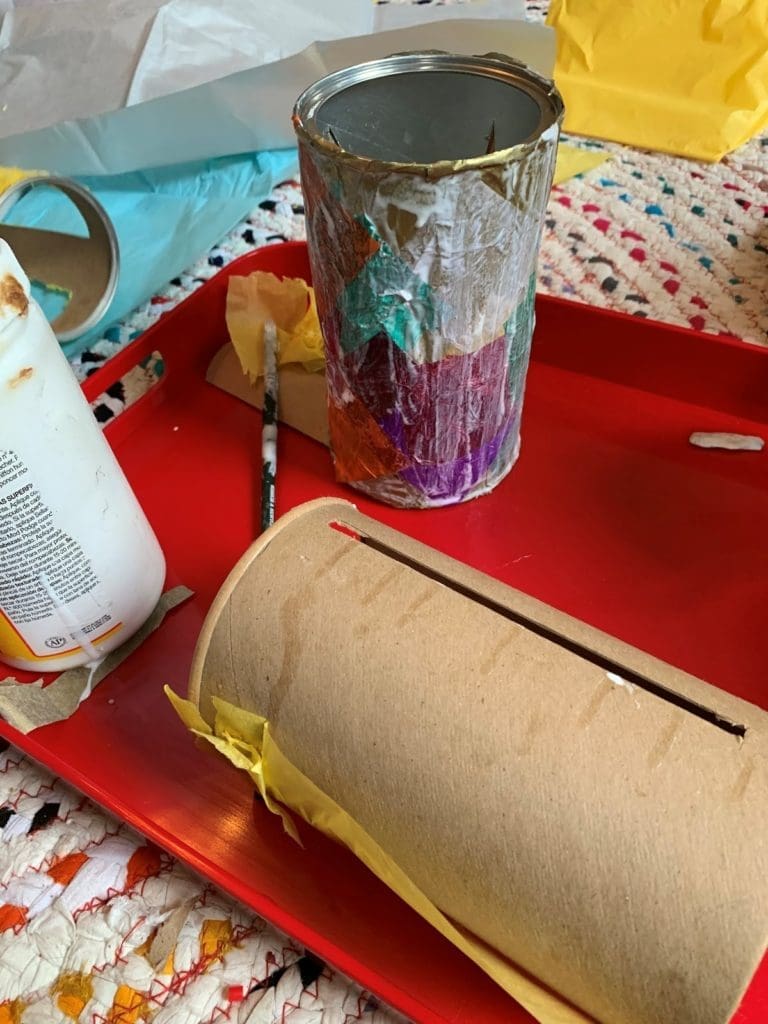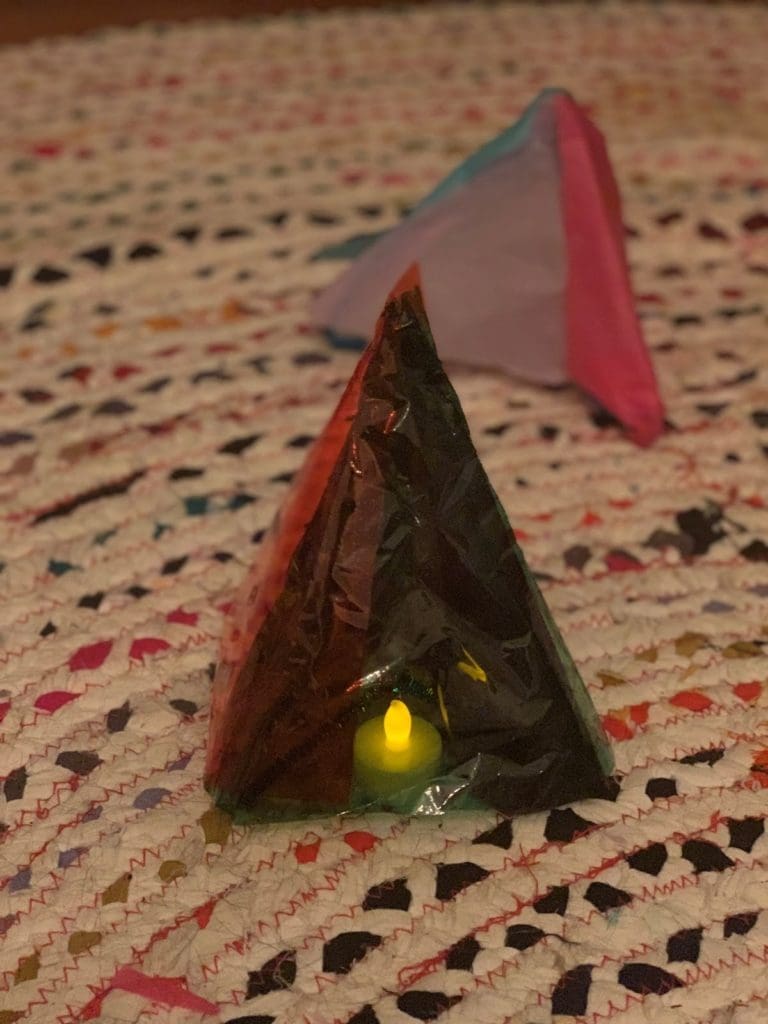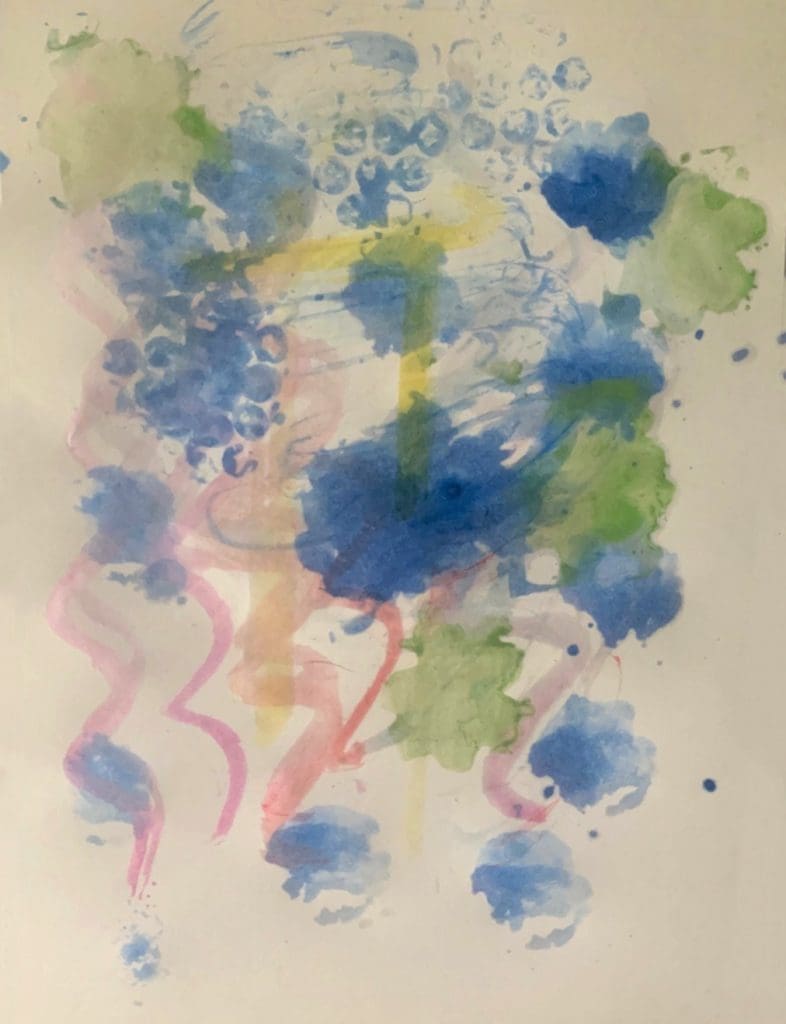Summer is coming to an end. It’s a time to relish freedom, enjoy family, and spend a few more minutes in the outdoors. This month’s projects celebrate the end of the holidays.
Project 1: Lanterns, Lanterns, Lanterns
With Summer holidays coming to an end, its the perfect time to catch a few evenings as a family (and maybe a few fireflies). Lanterns can make these evenings even more magical.
What do you need? The PDF below offers three versions of lantern projects. Ideally, you’ll need a form, a translucent paper, and glue or tape.
Try this? Lanterns are easy to make. Start by creating your form. An oatmeal container works great or you can also hot glue popsicle sticks together. Even a few bent pipe cleaners can work. Adorn your form with translucent materials, like tissue paper or cellophane. A careful adult could place a tea light in the lantern, but a battery-operated light is best.
Collection Connections:

You can think of your lanterns as colorful sculptures. One particular sculpture can serve as inspiration. Lucky Bellevue’s Happy is made from pipe cleaners, as well as trays and brackets.
- What do you think the name means?
- How do you think the artist made the sculpture?
- How many pipe cleaners did he use?
- What is the title of your lantern sculpture?

Glass is a particularly good inspiration for lantern making too. Art glass can feel magical with its colorful translucency. Some artists, like Paul Stankard, employ glass to create fascinatingly realistic works. Many glass artists, like Stanislav Libensky, use glass in an abstract manner. Explore the glass objects in the collection as inspiration for your lanterns.
Project 2: Animal Collages
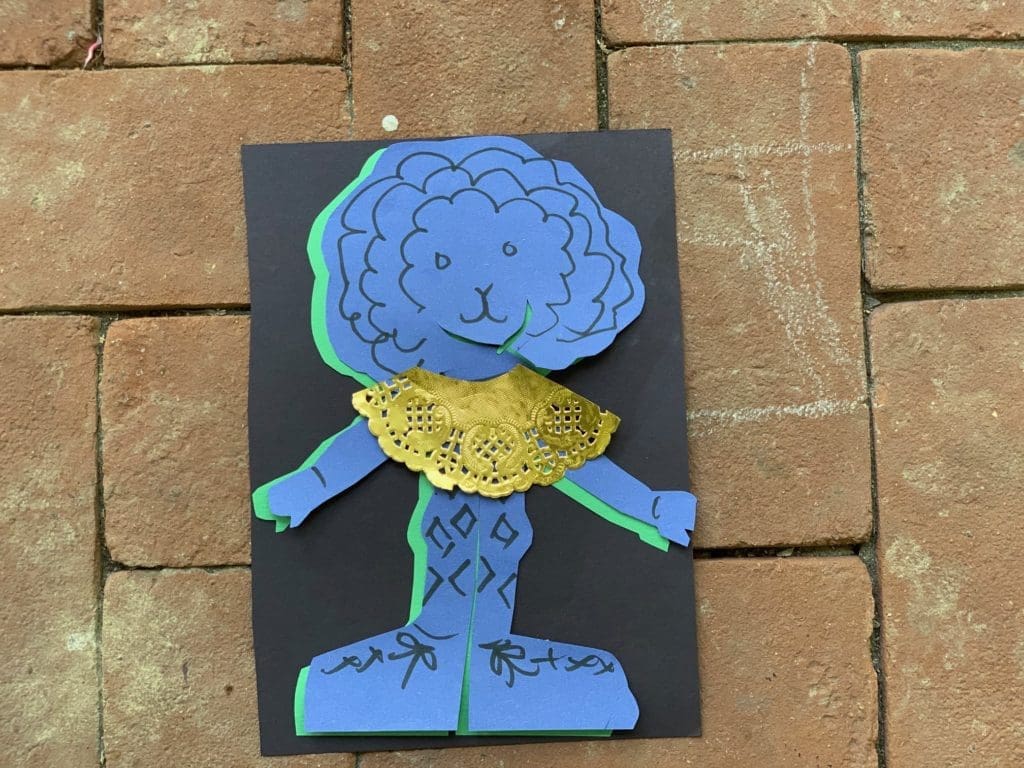
This summer, many of us spent more time at home, perhaps surrounded by pets, watching fantastical animals, or reading about out of this world creatures.
While drawing is one way to depict creatures, collage or sculpture can expand your creativity.

What do you need? Scissors, glue, paper, and/or cardboard.
Try this? Cut shapes from paper and/or cardboard. Challenge yourself to create an abstracted figure from these pieces. Glue your shapes onto a background. You can add a few details with marker at the end.
Collection Collection:

Explore Bull Connor’s Dog by Don Drumm.
- How would you describe the attitude of Akron artist Don Drumm’s dog? Despite being abstract, most people can describe the dog’s attitude.
- In what ways is this sculpture similar to a live dog?
- How is it different?
- What are some of the shapes you see in the sculpture?

Printmakers are particularly good at simplifying real life to create appealing compositions. Cyrk by Hubert Hilscher, for example, shows an animal. While it is not a photograph, most viewers would say this is a lion. Explore the ways the artist uses simple shapes to create the animal. How would you describe the animal’s attitude? Explore the other works by Hilscher in the collection. Which animal is your favorite?
Project 3: Sculpture
School is upon us, and with it, the requirements to follow the rules. Art is a chance to make your own rules. Challenge yourself to turn regular household materials into a sculpture. Make something you find beautiful.
What do you need? Pick just one media, like a plastic folder.
Try this? Use your imagination to manipulate it to create a 3-D form. Or, put together only two forms, like paper straws and pipe cleaners. As you work, think about how your sculpture looks from all angles. Pick up your sculpture so you look at the forms from a different angle.
Collection Connections:

Yayoi Kusama’s Arm Chair is made from simple materials like canvas, shoes, and an armchair. With the lack of coloration, the eye can’t help but get lost in the forms.
Explore the collection online for other sculptures. Notice how many sculptures veer towards abstraction and away from realism. What forms do you notice? What are some words you’d use to describe the surface of the sculptures?
Project 4: Break the Rules with Color
Another way to break the rules is to expand the concept of painting. You may think paintbrushes are only one way to paint. Explore what other tools from your kit can be used to apply paint. The surface you paint on can be transformed with foil or tissue paper. Or you can make a translucent masterpiece by painting on the clear vinyl.
What do you need? Compile as many non-paintbrush tools as you can. Add paper, watercolors, and water. You can also compile as many non-paper surfaces to paint on. Add brushes, watercolors, and water.
Try this? Painting without a brush can help you explore abstract painting. You can get a better feel for pattern and texture.
Collection Collections:

2009.30.6
Abstract painting is one of the strengths of the museum’s collection. Charles Cough’s Muniment, for example, offers the viewer form and color. Explore the work. Imagine applying the brushstrokes. Try to picture laying on the paint. Compare this work with the other Cough painting in the museum’s collection, July Thirteenth (70). Which painting appeals to you more? With such wide variety of abstract paintings, finding your favorites is important.
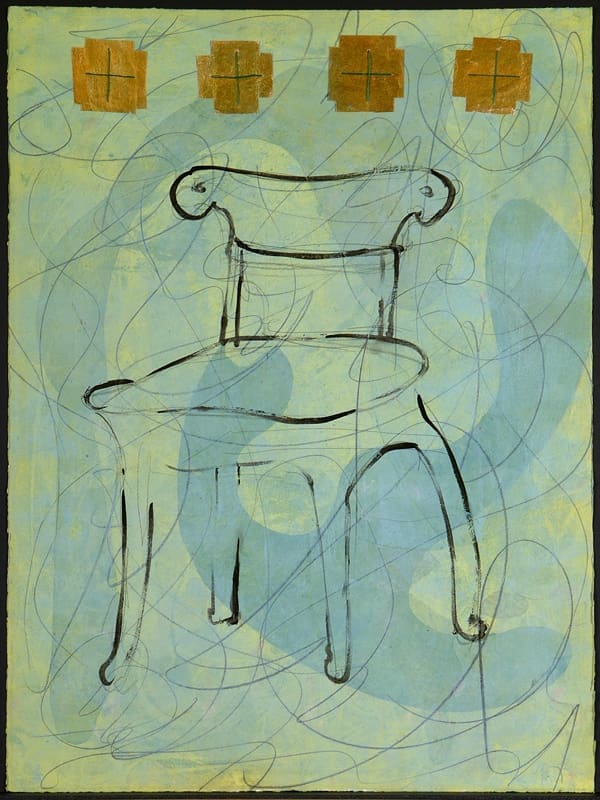
Hui-Chu Ying, (Taipei, Taiwan, 1956 – ). Invitation, 2002-203. Purchased with funds from Akron Art Museum Docents in memory of Betty Blair
2005.13
Layering color is also common in contemporary prints. Local Akron printmaker Hui-Chu Ying often layers colors. Her works include layers of color interspersed with realistic elements. You can rework your abstract bubblewrap print, for example, employing collaged realistic elements.
Collection Connections
Artist La Wilson broke many of the commonly accepted art world rules. She was largely self-trained. Rather than carving from wood or stone, her sculptures were usually assembled from found objects. Learn more:
Many of us have been home more often, passing the time differently than other summer holidays. Be inspired by La Wilson to commemorate your summer.
Get Art: Why does some art not look like anything?
Many of these projects encouraged you to create compositions you enjoy but don’t represent something you see in real life. Think about why some artists make work that is non-representational.
These projects employ supplies collected in the museum’s Creativity Care Kits. These kits are freely available, while supplies last, at the museum. Free tickets required to enter the museum.
Family Days are made possible by PNC with additional support from The Kathy Moses Salem Philanthropic Fund of the Akron Community Foundation, The R.C. Musson and Katharine M. Musson Charitable Foundation, and the Robert O. and Annamae Orr Family Foundation.



